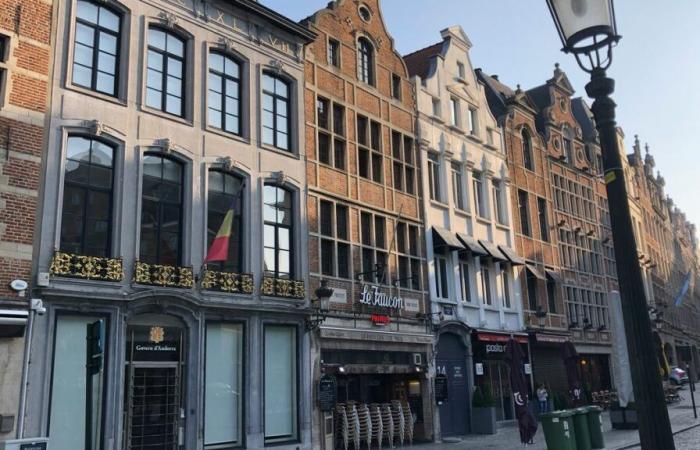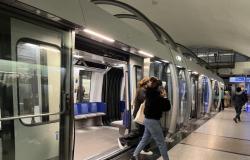For Inès, architecture is a vocation. “I like the idea of building something for people, of seeing that what we do has an impact on them and their environment,” sums up the student, originally from Bordeaux. In 2020, on Parcoursup, she applied to six national schools of architecture (ENSA). Despite her “Bien” grade in her baccalaureate, she was rejected everywhere. Plan B was all there. “I turned to Belgium, more financially accessible than Spain,” she remembers. Even if I didn’t really know how it was going to happen, I knew that this was what I wanted to do!”
Every year, like Inès, a thousand French students leave to settle in Belgium to pursue their studies in architecture. The faculties of Brussels, Louvain, Lièges and Mons constitute those that the French and Belgians nickname the “21st French school of architecture” (in addition to the 20 ENSA, editor’s note). Easy to access and renowned, in just a few years, these schools have become an Eldorado on which students disappointed with Parcoursup can count.
Nathan thought he met the ENSA criteria: internships, general baccalaureate specializing in maths, physics and engineering sciences, participation in school open days, etc. “I made eight requests on Parcoursup, all rejected.” Belgium then appeared as a possibility. “I didn’t have time to think about it, everything happened very quickly until the start of the school year. I chose the Université libre de Bruxelles (ULB) for practical and logistical reasons,” admits Nathan, originally from Vichy.
Quite similar architectural studies
Inès also chose the ULB. “I was both impatient and excited. But in the end, the more people talked to me about my move to Belgium, the more I realized and the more stressed I became.” The last goodbyes at the airport with her family were “very hard, everyone was crying,” she says, laughing, looking back.
For his part, Brice had anticipated. When he learned that he would not be admitted to any of the nine ENSAs he had applied for, the student, also from Bordeaux, joined groups on social networks. His conversations made him lean towards the University of Liège. “When the new school year started, I already knew a few people, it was reassuring.”
The three students are unanimous: if they also chose Belgium, it is also and above all because the country is French-speaking. “The integration of students does not pose any problem. The cultural gap is marginal and we do not even see any difference in terms of teaching,” assures Jean-Didier Bergilez, vice-dean at the La Cambre Horta faculty of architecture at the ULB.
Now in his third year, Brice has immediately found his place. “Belgians have a lot of prejudices about the French, they think we are very arrogant, it’s funny! We tease each other about our expressions but that’s it, we integrate very quickly.” Students also praise the teacher-student relationship. “We use the informal “tu” form, we call each other by our first names, we even go for beers after class. It’s more friendly even if there is a lot of respect,” points out Inès.
A place “put back into play” each year
The Bordeaux student is now about to complete her final year at ULB. But it hasn’t been so simple. “In the first year, there were more than 500 of us. And we were immediately told that by the end of the year, only a third of us would still be there. So, even if it’s easy to get in, it’s much harder to stay.”
Because in Belgium, there is no selection. To enter the first year, Belgians and French people simply send an application form. “These are studies that attract because there is both construction and creativity, many challenges to take up, particularly environmental ones. Students feel like real actors,” says the dean of the Faculty of Architecture and Urban Planning in Mons. As a result, each year, the number of architecture students continues to climb. “In six years, the number of students has exploded, we have gone from 1,200 to 2,400 students,” sums up the vice-dean of the ULB. Among them, 30% are French students, still as numerous in the classes.
Finally, as in France, the requirement is becoming more and more felt. “Since there are a lot of us, they sort us out,” notes Brice. “I’ve already left some classes in tears because the teachers don’t hesitate to tell us when we don’t meet their expectations. They push us to the limit to eliminate the weakest.” Students talk about the carts, little sleep and very intense work periods. “We’re under a lot of pressure, it’s not easier than in France,” retorts Nathan, currently in his third year. “It’s almost more selective because every year, our place is put into play. Many give up and repeat a year in Belgium. But at least we had our chance.”
French students more motivated to succeed
And there is no question of reviewing the principle of admission in Belgium. “We sometimes hear talk of competitions, of numerus clausus, but I don’t think universities want to defend this system,” confides the dean of the University of Mons. “There has never been any question of limiting access to the French or making them pay more. Especially since when I see the Parcoursup system and the skills expected, we can say that there is a huge gap: it is not necessarily good results in high school that will make us brilliant and able to flourish in these studies,” confirms the Brussels vice-dean.
Moreover, according to Jean-Didier Bergilez, at ULM, French students are more successful than Belgian students. “I think that those who went through Parcoursup have thought more about their orientation, they have a greater architectural culture, they are more motivated. And then, for them, coming to Belgium is a family and financial commitment and therefore, again, a certain motivation.”
Once they graduate, French students do not seem to have any trouble entering the job market. Since the Belgian diploma is recognized in France, young architects can choose to return to their country of origin. “It’s sometimes difficult to be away from your loved ones, especially for birthdays,” says Inès. “But I know that it brings me a lot. I am much more open than before, less introverted.” The future architect admits that her professional future is still “unclear” but does not rule out going to work elsewhere in the world. “Our journey does not end because French schools refused us. Plus, Belgium is great!”






